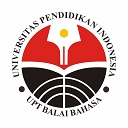Complaint Discourse Features in Modality Forms: A Comparative Analysis of Japanese and Indonesian Internet Review
Abstract
This paper describes a comparative study of complaint discourse in Japanese and Indonesian focusing on modality expression. 500 items of each language were collected from TripAdvisor and usage of modality were quantitatively and qualitatively analyzed. As a result, modality forms have often been reported to be used to show consideration for the other person, such as avoidance of judgments and euphemisms, roundabout expressions or consideration (hairyo) for the other person are expressed. It was confirmed in complaint discourse, that there are cases in which have no consideration (hairyo) for the other person at all, rather than in a direct way of speaking. Both Japanese and Indonesian modality functioned effectively for expressing complaint. It was found that in “obvious complaint” the modality emphasizes the hotel’s faults and forces them to work appropriately, and in “implicit complaint”, the modality can express complaint with slightly reducing the burden on the hotel side by emphasizing the self-pay. The subject is used to determine whether an utterance expressing Complaint is “explicit/direct” or “implicit/indirect” in terms of the discourse level. In other words, the degree of FTA (Face Threat Act) differs depending on whether the subject is the writer (the guest) or the reader (the hotel). When the subject of “an act” is the reader (hotel side), the modality form functions to emphasize the reader’s fault (wrongness) or to force the reader (hotel side) to act. On the other hand, when the subject of “an act” was the writer, the function was to emphasize self- imposed burden or to understate the fault/burden of the reader (the hotel side).
Keywords
Full Text:
PDFReferences
Alwi, H. (1992). Modality in Indonesian Language. Jakarta: Kanius Press.
Choi, D. W. (2009). Fuman hyōmei to sore ni taisuru ōtō - Chūgokugo-bogo washa to Nihongo-washa o hikaku shite [Complaints and responses - Comparison between Japanese native speakers and Japanese speaker]. Tabunka Sesshoku Bamen no Gengo kōdō to Gengo Kanri, 7, 43 - 63.
Hatsushikano, K., Kumatoridani, T., & Fujimori, H. (1996). Fuman hyōmei sutoratejī no shiyō keikō - Nihongobogowasha to Nihongogakushūsha no hikaku [Trends in using dissatisfaction strategies - Comparison between Japanese native speakers and Japanese learners].Nihongo Kyōiku, 88, 128-139.
Higuchi, K. (2014). Shakai Chōsa no tame no Keiryō Tekisuto Bunseki Naiyō Bunseki no Keishō to Hatten o Mezashite’ [Aiming at succession and development of lightweight text analysis for social research for social research]. Tokyo: Nakanishiya Shuppan.
Ishizuka, Y. (2014). Sekkyaku-bamen ni okeru Nihongo no Fuman Hyōmei ni kansuru Kōsatsu - Bogowasha to Hi-bogowasha no Hikaku kara [A Study on Expressions of Dissatisfaction in Japanese in Special Situations - From a comparison of native and non-native speakers]. Aomoridaigaku Kenkyū Kiyō, 35, 41-57.
Japanese Descriptive Grammar Research Group. (2003).
Gendainihongo Bunpō 4 dai 8-bu Modariti [Modern Japanese Grammar 4 Part 8 Modality]. Tokyo: Kuroshi o Izuru-ban.
Jeong, H. (2005). Nikkan ryōgengo ni okeru “fuman hyōmei” ni kansuru ichikōsatsu - Ibunka ni yoru “momegoto” de no ōdō oyobi gengo hyōgen o chūshin toshite [A Study on "Expression of Dissatisfaction" in Japanese and Korean Languages - Focusing on the royal road and linguistic expressions in "disputes" due to different cultures]. Nīgatadaigaku Kokusai Sentā Kiyō, 1, 63 - 71.
Lee, S. (2006). Nikkan no ‘fuman hyōmei’ ni kansuru ichikōsatsu: Nihonjin Gakusei to Kangokujin Gakusei no Hikaku o Tōshite [A Study on "Dissatisfaction" in Japan and Korea: Comparing Japanese Students and Individual Students]. Shakai Gengo Kagaku-kai, 8(2), 53-64.
Kekidze, T. (2003). Gendai nihongo ni okeru hyōgen no “yawarage~””~sōda”,” ~ge”, “~ppoi” nado no baai ["Softening" of Expressions in Modern Japanese: Cases such as "~Souda", "~Ge", and "~Ppoi"]. Kotoba to Bunka, 4, 293-306.
Krisdalaksana, H. (2014). Introduction to Word Formation and Word Classes in Indonesia. Jakarta: Y ayasan Pustaka Obor Indonesia.
Matsuki, M. (1992). “Miru koto” to Bunpō Kenkyū ["Seeing" and Grammar Studies]. Nihongo-gaku, 11(9), 57-71.
Miyazaki, K., Adachi, T., Noda, H., & Takanashi, S. (2002). Modariti Shin Nihongo Bunpō Sensho 4 [Modality Modality New Japanese Grammar Selection]. Tokyo: Kuroshioshuppan.
Morita, F. (1990). Iwayuru yōtainojodōshi “soda” ni tsuite: Yōhō no bunrui o chūshin ni [On the so-called state auxiliary Verb "Sou": Focusing on the classification of usage]. Tōkaidaigaku Kiyō
Ryūgakusei Kyōiku Sentā, 10, 55 - 70.
Nitta, Y. (1991). Nihongo no Modariti to Ninshō [Japanese
modalities and certifications]. Tokyo: Hitsuji Shobō.
Olshtain, E., & Weinbach, L. (1993). Interlanguage Features of the Speech Act of Complaining. In G. Kasper, & S. Blum-Kulka, Interlanguage Pragmatics (108-137). New York: Oxford.
Palmer, F. R. (2001). Mood and Modality 2nd edition. Cambridge: Cambridge University Press.
Puksi, F .F . (2016). Tindak Tutur Mengeluh pada Empat Laman Penyedia Review Hotel [Interlanguage Features of the Speech Act of Complaining] (Master Thesis). Universitas Pendidikan Indonesia.
Wongsamin, S. (2016). Study on complaint expressions
and responses: Comparing Japanese and Thai native speakers. Linguistic Culture and Japanese Language Education, 51, 11-20.
Yamaoka, M. (2004). Nihongo ni okeru hairyo hyōgen kenkyū no genjō [Current status of considerate expression research in Japanese]. Nihongo Nihon bungaku, 14, 17 - 39.
Yamaoka, M., Makihara, I., & Ono, M. (2010). Komyunikēshon no hairyo hyōgen - Nihongo Goyōron Nyūmon [Considerate Expression Communication - Introduction to Japanese Pragmatics. Tokyo: Meiji Shoin.
Yamaoka, M. (2016). “Kamoshirenai” ni okeru Kanōsei Handan to Taijin Hairyo. In O. Masaki, Ri ki Kusunoki (hen) “Gengo no Shukansei: Ninchi to poraitonesu no setten” (133 – 150). Tokyo: Kuroshioshuppan.
WEB REFERENCES
Tripadvisor Japan https://www .tripadvisor.jp/ (Accessed December 1, 2019)
Tripadvisor Indonesia https://www.tripadvisor.co.id/ (Accessed December 1, 2019)
DOI: https://doi.org/10.17509/japanedu.v7i2.51928
Refbacks
- There are currently no refbacks.
Copyright (c) 2022 JAPANEDU: Jurnal Pendidikan dan Pengajaran Bahasa Jepang

This work is licensed under a Creative Commons Attribution-ShareAlike 4.0 International License.
 Published by:
Published by: Department of Japanese Language Education, Faculty of Language and Literature Education
Universitas Pendidikan Indonesia
 Online ISSN: Online ISSN:2528-5548 |

JAPANEDU: Jurnal Pendidikan dan Pengajaran Bahasa Jepang (e-ISSN:2528-5548) lisenced under a Creative Commons Attribution-ShareAlike 4.0 Internasional (CC BY-SA 4.0)


